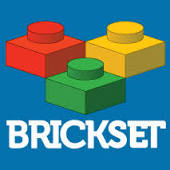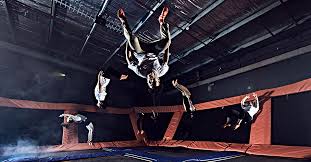lego shop 8886

By default FSR suppresses one particular critical section that Fallout seems to work better without. There is another related critical section which some users seem to be able to suppress without causing problems, but other users experience CTDs on interior->exterior transitions or other problems when its suppressed. That one only produces a small improvement to stuttering, so I don't normally recommend suppressing it, but you can if you want to. To suppress it, find the line that says "CallerAddress = 0x70172A" in your ini file and add a new line right after it that says "Mode = 5". Note that case is important there... it should be "Mode" and not "mode". This setting will have no effect if Master\bHookCriticalSections or CriticalSections\bUseOverrides are set to 0. Posts: 9 Joined: Sun Jun 26, 2011 4:04 pm Posts: 28 Joined: Thu Mar 03, 2011 7:45 am If you are looking for lego brand motors, Philo has a lot of technical info on almost all (if not all) lego 9v motors here.

You should be able to see what all lego motors there are, and find one to suit your needs. Posts: 1550 Joined: Thu Oct 30, 2008 4:54 pmYou should be able to see what all lego motors there are, and find one to suit your needs.Most of them don't provide a tacho count and need adapters to work with the NXT.I guess, for any NXT robot, you want a motor with a built in tacho counter so that they are regulated to a constant speed. I think, only the NXT motor has this feature up to now. Posts: 14 Joined: Fri Mar 04, 2011 9:52 pm If you don't insist of using LEGO motors, and you don't need speed control, you could consider using standard servomotors using a controller such as this one.I think, only the NXT motor has this feature up to now.You won't find a motor that doesn't need an adapter to work with the NXT (except the NXT motors).Well, if it is for a lego robot, it would be a lot easier to connect an encoder to a lego motor, than to use a non-lego motor and try to mechanically interface it.

If you don't insist of using LEGO motors, and you don't need speed control, you could consider using standard servomotors using a controller such as this one.A servo usually only has 90-180 degrees of motion, and it is based on absolute position (but without feedback to the NXT). A modified servo (or continuous rotation servo) is yet even worse. You don't get any feedback from it, and it's speed isn't as defined as using PWM with a normal DC motor.
buy lego 8458If you need encoder feedback, you really should use the NXT motors.
buy lego chimaThey are by far the cheapest solution I know of, and are specifically for use with the lego system.
buy lego 60110They are also one of the most powerful lego motors, and are actually fairly small considering the gear train, encoder, connectors...
buy lego tumbler
Why do you need motors smaller than NXT motors, as well as encoder feedback? Posts: 130 Joined: Tue Jul 20, 2010 2:01 pm The normal servo motors (with 90-180 degrees rotation) do indeed have a position feedback sensor. They use a potentiometer connected to the output shaft. The circuit inside the servo uses a PID (or sometimes just P) controller to regulate the position to a point specified by the pulse length of the signal pin, usually between 500 and 2500 uS.
cheap 4x2 lego bricksThese are actually pretty cool.
buy lego ev3 gyro sensorYou can specify the position, and it will try with all its might to get to that position. However, there is no way for the controller to know the current position, so it doesn't know when it reaches the position, or if it stalled trying.A modified (or continuous rotation) servo is basically identical in appearance to a standard servo.

Actually, you can convert a standard servo into a continuous rotation servo. To convert it, you need to disconnect the POT, and glue it in a relatively center position. You also need to remove any mechanical interference with it rotating infinitely in either direction. In this manner, the internal circuit/processor will always see the same position from the POT, so the further from that position you specify the new location, the faster the motor runs trying to catch up. Of course it never will catch up, and it will just run. Thus, this type of servo not only doesn't allow you to know it's position, but it also doesn't allow you do modify the PWM specifics. You are stuck using whatever controller circuit/processor that the manufacturer put in it. You can't specify a certain PWM duty cycle.Adapters for almost anything but lego motors, you need to make yourself. Even the lego ones you can make. You can buy NXT -> RCX style adapters here, and RCX -> PF adapters here or here. There is no NXT -> PF adapter as an all-in-one (you need to use two adapters, or make your own).

You can only use servo motors with that controller. Look down below for related items.You can only independently control one motor per port. Connecting motors using a custom adapter does not turn it into a motor MUX. If you need more than 3 motors controlled by the NXT, there are many options available. Last edited by s.frings on Thu Jun 30, 2011 6:24 pm, edited 1 time in total. Adapters for almost anything but lego motors, you need to make yourself. You speak of two RCX->PF adapters (Lego 8871 and 8886). I believe, that only one of them is suitable as an RCX->PF adapter. I believe the short 20cm cable (Lego 8886) is, but the long 50cm cable (Lego 8871) is not. I can 100% guarantee that they both will work. Unless Lego changed to using DBG connectors on both ends of the long cables since I bought mine 15 months ago. The site doesn't say anything about the longer one working, but both of my longs ones (as well as short ones) have a LBG and a DBG connector (LBG is the one with the RCX style bottom).